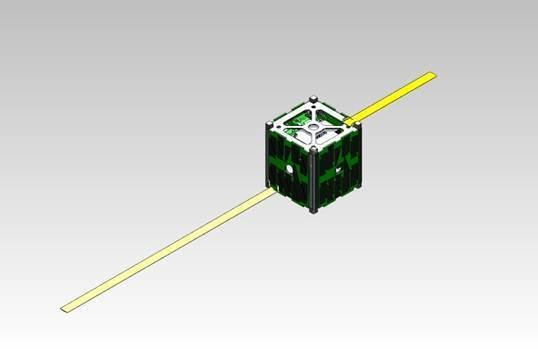Mission type Technology Launch mass 1.2 kilograms (2.6 lb) | Spacecraft type 1U CubeSat Rocket H-IIB | |
 | ||
Operator San Jose State University/JAXA/ÅAC Microtec/NASA Launch date 21 July 2012, 02:06 (2012-07-21UTC02:06Z) UTC | ||
The Technological and Educational Nanosatellite, or TechEdSat, is a series of CubeSats built by San Jose State University students in partnership with Ames Research Center and ÅAC Microtec.
Contents
The first TechEdSat had a mission to evaluate Space Plug-and-play Avionics (SPA) from ÅAC Microtec, and was launched on an H-IIB carrier rocket from the Tanegashima Space Center on 21 July 2012 to the International Space Station, where it was deployed via the JAXA J-SSOD deployer. on 4 Oct 2012. It reentered to atmosphere on 5 May 2013.
TechEdSat-2 was planned as a 6U CubeSat, a collaboration between ÅAC Microtec in Sweden and NASA Ames.
TechEdSat-3p was a 3U CubeSat that was launched to the International Space Station on November 20, 2013 on a HTV-4 from Tanegashima, Japan and subsequently deployed into orbit using the JEM-Small Satellite Orbital Deployer. It tested an exo-brake to demonstrate a passive deorbiting.
TechEdSat-4 is a 3U CubeSat mission developed, integrated, and tested at NASA Ames in partnership with student interns from San Jose State University in California and the University of Idaho. The objective of the TechEdSat-4 mission is to demonstrate new technologies including satellite-to-satellite communications and an upgraded exo-brake device to demonstrate a passive deorbiting. TechEdSat-4 was launched as a secondary cargo payload on the Cygnus CRS Orb-2 ISS resupply mission. The launch vehicle was the Orbital Sciences Corporation Antares-120, launching from the Mid-Atlantic Regional Spaceport on Wallops Island, VA on July 13, 2014. TechEdSat-4 was deployed from the International Space Station via the NanoRacks CubeSat Deployer on March 4, 2015.
TechEdSat
The first TechEdSat (later renamed "TechEdSat-1") was a 1-U cubesat to evaluate Space Plug-and-play Avionics (SPA) designed in Sweden by ÅAC Microtec. It was also originally intended to perform a communications experiment utilizing the Iridium and Orbcomm satellite phone network, although this function was disabled before launch. TechEdSat was deployed into orbit from the International Space Station on 4 Oct 2012.
Hardware
Specifications
Launch
TechEdSat was launched from Pad 2 of the Yoshinobu Launch Complex at Tanegashima on 21 July 2012, aboard Kounotori 3 atop an H-IIB launch vehicle. Kounotori 3 carried the satellite, along with the Raiko, We-Wish, Niwaka and F-1 spacecraft, to the International Space Station, from where it was deployed via the JAXA J-SSOD deployer, from the Kibo module on 4 Oct 2012 at 15:44:15.297 UTC.
Beacon Packet Format
TechEdSat-1 transmitted a heartbeat packet over amateur radio every 4 seconds. These packets are 122 ASCII character AX.25 packets. Amateur band radio frequency is 437.465 MHz.
Two consecutive 12 bit raw ADC Data values are parsed into one 3 byte chunk in order to save data space.
